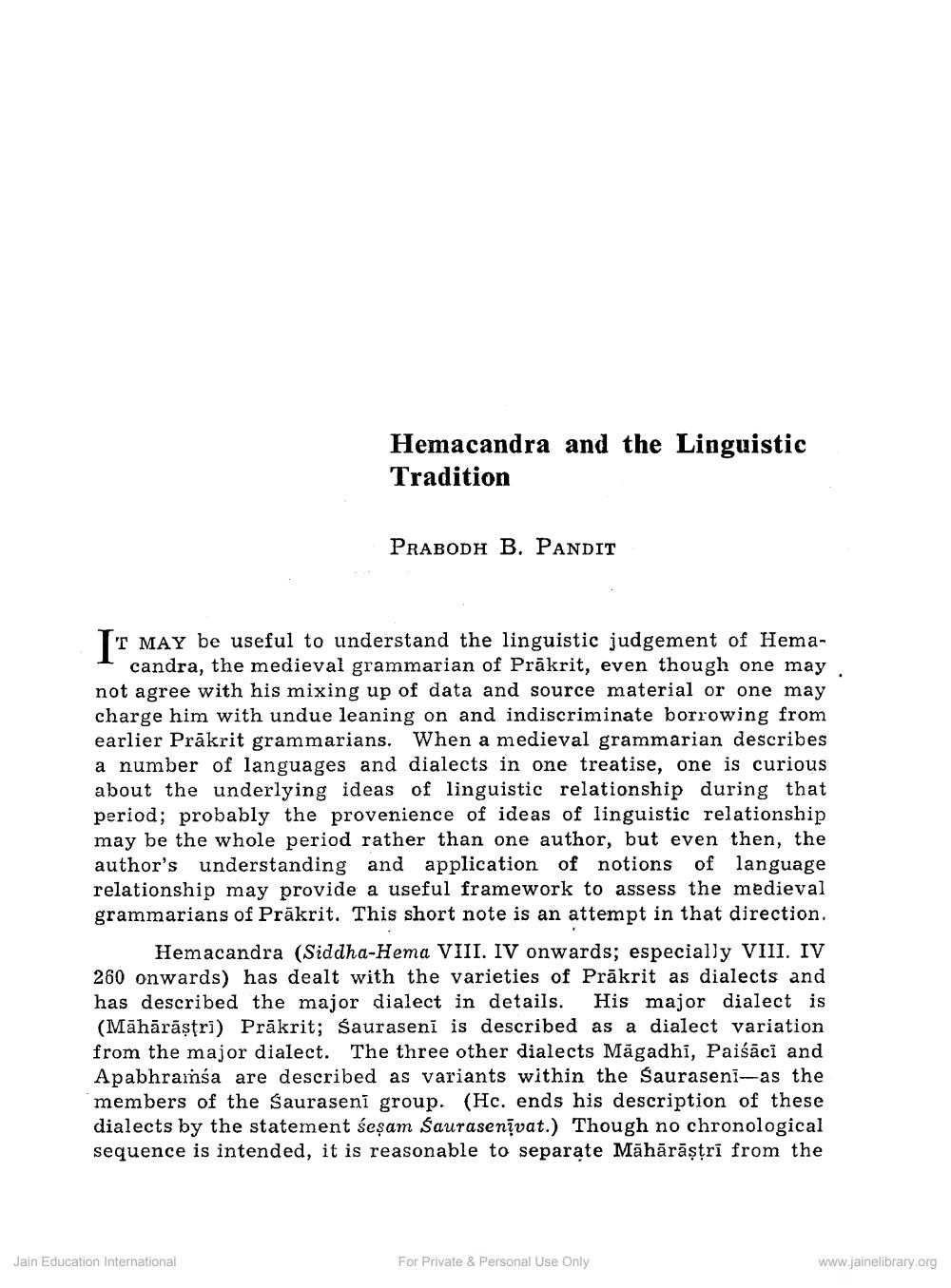Book Title: Hemacandra and the Linguistic Tradition Author(s): Prabodh Bechardas Pandit Publisher: Z_Mahavir_Jain_Vidyalay_Suvarna_Mahotsav_Granth_Part_1_012002.pdf and Mahavir_Jain_Vidyalay_Suvarna_ View full book textPage 1
________________ Hemacandra and the Linguistic Tradition PRABODH B. PANDIT IT MAY be useful to understand the linguistic judgement of Hema candra, the medieval grammarian of Prākrit, even though one may not agree with his mixing up of data and source material or one may charge him with undue leaning on and indiscriminate borrowing from earlier Prākrit grammarians. When a medieval grammarian describes a number of languages and dialects in one treatise, one is curious about the underlying ideas of linguistic relationship during that period; probably the provenience of ideas of linguistic relationship may be the whole period rather than one author, but even then, the author's understanding and application of notions of language relationship may provide a useful framework to assess the medieval grammarians of Prākrit. This short note is an attempt in that direction. Hemacandra (Siddha-Hema VIII. IV onwards; especially VIII, IV 260 onwards) has dealt with the varieties of Prākrit as dialects and has described the major dialect in details. His major dialect is (Māhārāştri) Prākrit; Sauraseni is described as a dialect variation from the major dialect. The three other dialects Māgadhi, Paiśācī and Apabhraisa are described as variants within the Sauraseni-as the members of the Sauraseni group. (Hc. ends his description of these dialects by the statement seşam Saurasenīvat.) Though no chronological sequence is intended, it is reasonable to separate Māhārāştri from the Jain Education International For Private & Personal Use Only www.jainelibrary.orgPage Navigation
1 2 3 4
